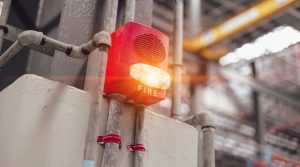
The Benefits of Integrated Fire Protection Systems for Businesses
Introduction
Fire safety remains a top priority for businesses of all sizes. With the increasing complexity of commercial and industrial environments, relying on standalone fire protection measures is no longer sufficient. Instead, integrated fire protection systems offer a comprehensive approach by combining detection, suppression, and emergency response solutions into a unified system. This not only enhances workplace safety but also minimizes financial and operational risks associated with fire hazards.
What Is an Integrated Fire Protection System?
An integrated fire protection system is a cohesive network of fire safety components that work together to detect, alert, control, and suppress fires. These systems may include fire alarms, sprinklers, smoke detectors, gas suppression systems, emergency lighting, and automated monitoring solutions. By centralizing these elements, businesses can achieve a faster and more effective response to fire incidents.
Key Benefits of Integrated Fire Protection Systems
1. Improved Response Time
One of the primary advantages of an integrated fire protection system is its ability to significantly reduce response time. When a fire is detected, the system can immediately trigger alarms, activate suppression systems, and notify emergency responders, ensuring swift action to contain the situation.
2. Enhanced Safety for Employees and Assets
By linking fire detection and suppression mechanisms, businesses can create a safer environment for employees, customers, and assets. Early detection and immediate action reduce the risk of injuries, fatalities, and property damage, safeguarding both human lives and business operations.
3. Reduced Risk of Business Disruptions
Fire incidents can lead to costly downtime and operational disruptions. Integrated systems help mitigate these risks by swiftly controlling fires before they escalate, allowing businesses to resume operations more quickly and avoid long-term financial losses.
4. Cost-Effective Fire Protection
Although the initial investment in an integrated fire protection system may be higher, it proves cost-effective in the long run. Automated systems reduce the need for manual intervention, lowering labor costs and minimizing the risk of extensive fire damage that could result in significant repair expenses.
5. Regulatory Compliance and Insurance Benefits
Many industries are subject to strict fire safety regulations. Implementing an integrated fire protection system helps businesses comply with local fire codes and industry standards. Additionally, insurance companies often offer lower premiums to businesses that implement robust fire protection measures, leading to financial savings.
6. Seamless Monitoring and Maintenance
Modern integrated fire protection systems often come with centralized monitoring solutions that allow facility managers to oversee fire safety measures in real-time. Remote monitoring, automatic diagnostics, and predictive maintenance capabilities ensure that fire protection equipment remains in optimal working condition at all times.
7. Scalability and Adaptability
As businesses grow and evolve, their fire protection needs may change. Integrated systems can be easily scaled or upgraded to accommodate new facilities, additional equipment, or emerging fire safety technologies. This adaptability ensures long-term protection and sustainability.
Conclusion
Investing in an integrated fire protection system is a proactive step that enhances safety, reduces financial risks, and ensures business continuity. By leveraging modern technology and a unified approach to fire safety, businesses can create a secure environment while optimizing compliance and cost-efficiency. Prioritizing fire protection not only safeguards lives and assets but also strengthens the long-term resilience of an organization.






